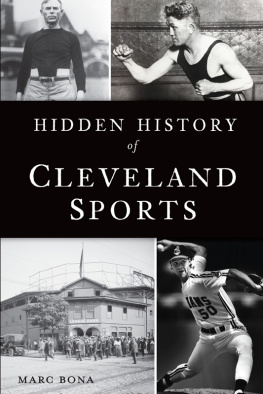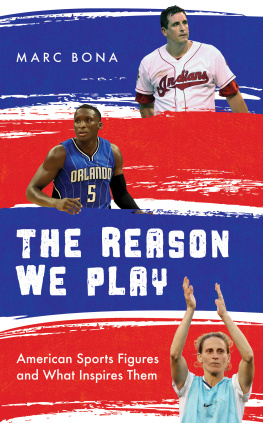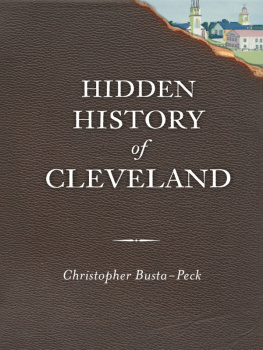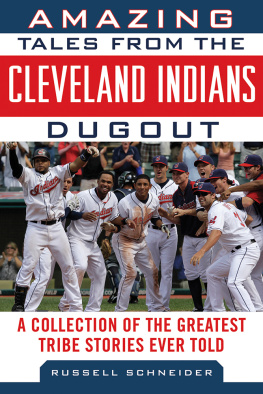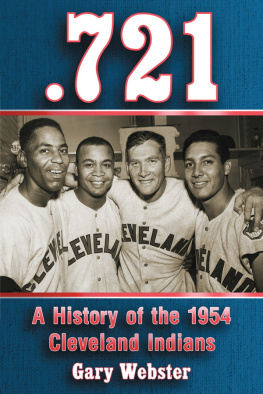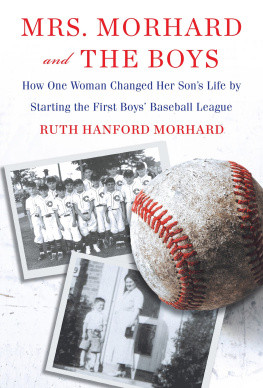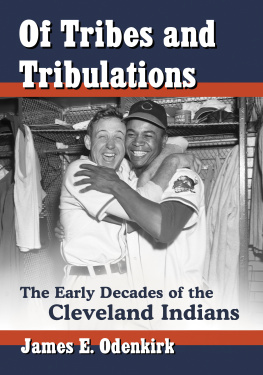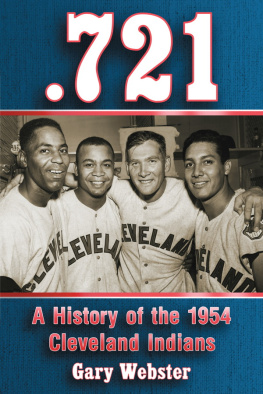

Published by The History Press
Charleston, SC
www.historypress.com
Copyright 2021 by Marc Bona
All rights reserved
First published 2021
E-Book year 2021
Front cover, top left: Georgia Tech Athletics; top right: authors collection; bottom left: Detroit Publishing Company via Library of Congress; bottom right: Nancy Stone, the Plain Dealer.
ISBN 978.1.4396.7270.9
Library of Congress Control Number: 2021934328
Print Edition ISBN 978.1.4671.4612.8
Notice: The information in this book is true and complete to the best of our knowledge. It is offered without guarantee on the part of the author or The History Press. The author and The History Press disclaim all liability in connection with the use of this book.
All rights reserved. No part of this book may be reproduced or transmitted in any form whatsoever without prior written permission from the publisher except in the case of brief quotations embodied in critical articles and reviews.
For Lynne and Addie
CONTENTS
PREFACE
So much has been written on The Fumble, The Shot, The Driveignoble moments in Clevelands rich sports history. But there are under-the-radar, often forgotten individuals, teams and moments that deserve attention, set the scene or serve as milestones over many eras. Some have been mostly forgotten as the years pile on, while others were a passing glimpse in sports history.
Some of the subjects in this book were born in Cleveland. Some died here. All left a mark here.
As I researched this book, I found myself saying, Hmm, I didnt know that. Or I might have known a fact or two about an era, team or player, but as I dug deeper I uncovered details that surprised me. Imagine taking a rock hammer and hacking repetitively until, all of a sudden, a small, shining gem appears. Constantly while I worked on this book, rabbit holes popped up. I would go down one, two or more, often in pursuit of one detail that might yield a sentence or two in a chapter. It didnt always work out. But it was always worth it.
The goal I tried to achieve is for anyone who picks up this book to have the same feeling reading it that I had writing it: to simply say, Hmm, I didnt know that.
ACKNOWLEDGEMENTS
No matter how solitary an experience researching and writing a book seems to be, it truly is dependent on other people, and they deserve a hat tip.
No chapter was complete before my editor and wife, Lynne Sherwin, read it and offered smart comments. Her deft eye, as well as her attention to big-picture and fine details, saved me multiple times.
My agent, Anne Devlin, has been instrumental in working with me on a variety of writing projects, and I appreciate her support. My editors at The History Press, John Rodrigue and Rick Delaney, lent a communicative, guiding hand along the way.
John Heisman graciously took my call while he was watching an Ohio State football game. He helped with my inquiries about his famous namesake great-uncles residence in Cleveland. Duey Graham, son of Cleveland Brown great Otto Graham, responded immediately when I contacted him about researching the 1940s Browns. Kevin OToole, Johnny Kilbanes great-grandson, also replied quickly in my inquiry about his famous boxing ancestor.
Rich Exner is a longtime colleague with whom we share at least two things: We once both received paychecks from United Press International, and we were both sports editors of our respective Big Ten college papers at the same time. He has covered just about everything in his career and is more deft at crunching numbers into readable prose than anyone I know. His cleveland.com weather database is a gold mine, helping me create an accurate setting for ball games over the years.
Chris Quinn, vice-president of content for Advance Ohio, my employer, was quick to allow me use of photographs from cleveland.com archives. The work from our many talented photographers over the years truly helped my chapters come alive.
Often, research led me to burrow into a rabbit hole, and it was the kind assistance of others who helped pull me out. Grand Central Publishings Ivy Cheng and publicist Jimmy Franco were immediately helpful in connecting me with Clarence Clemonss cowriter and close friend, Don Reo. Likewise, Bill Robinson, director of the Office of Public Relations with the University of Maryland Eastern Shore, was incredibly helpful in sharing photos of Clemons. Jason Chaimovitch of the American Hockey League clarified a perplexing mystery surrounding the 1938 Syracuse-Cleveland game. Don Stoner, sports information director at Augsburg College in Minneapolis, shared a great photo of hockey players at the college in 1928. Dave Hanson and Jonathon Jackson confirmed a key point clearing up a fact-versus-fiction moment regarding the movie Slap Shot.
My pal Scott Longert, who has chronicled the history of the Cleveland Indians in his wonderful books, was a go-to source when my research ran into contradictions. He is always willing to offer helpful advice.
Speaking of go-to sources, the wonderful collection of biographical portraits from the Society for American Baseball Research is invaluable to anyone delving into the sports history. Cleveland-area writer-editor Vince Guerrieri shares my love of baseball history and offers impeccable research and clear writing for his many topics, including his must-read 2020 SABR biography of George Steinbrenner. My many invaluable sources used for citation and confirmation also include baseball-reference.com for box scores and Case Western Reserve Universitys comprehensive Encyclopedia of Cleveland History.
Finally, should the reader find errors in my research, I take full blame and offer a sincere mea culpa.
THE CLEVELAND INFANTS
One and Done
In 1890, newspaper readers were treated to articles about three major leagues, the American Association (AA), the National League and the Players League.
Cleveland did not have an AA team that year, though newspaper accounts regularly included box scores and summaries. The National League team, the Spiders, featured a rookie named Cy Young. And then there were the Infants.
Clevelands team played in the upstart Players League (PL), which consisted of eight teams, including Boston, Brooklyn, Buffalo, Chicago, New York, Philadelphia and Pittsburgh. The league would last only one season. Cleveland finished 55-75. It counted the leagues batting champion among the wide-ranging characters on the roster. One broke into the league when he was sixteen. Several hold major-league records. One died just months after the season ended. Another ended up in the Hall of Fame, a player whose death would be forever listed as mysterious. One player was once arrested during a game, while another created a lasting baseball tradition.
The Brotherhood of Professional Base Ball Players had been formed in 1885 as a response to strict limits imposed in the National League. Those limits included a salary cap and, most important, the reserve rule, which contractually bound players to a team. What the Brotherhood did for the short term was create a player-driven league. What it did for the long term was give birth to the notion of free agency. While it would be eighty-five years before free agency would be ingrained into the game, the Players League in 1890 saw the athletes control their destiny.

Next page
